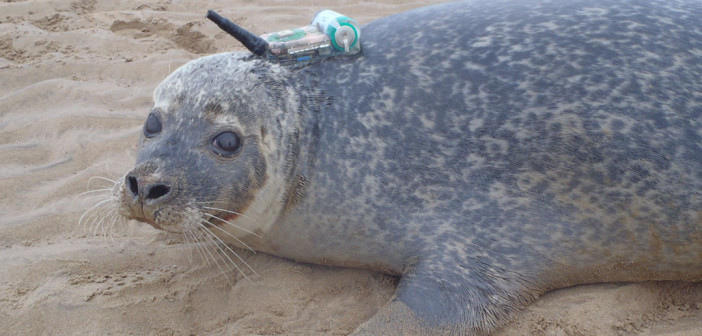Results in for stage one of a study into harbour seal population decline
Scientists have completed the first stage of a Scottish Government-funded, multi-year study into the possible causes for the rapid decline in harbour seal populations in Orkney. An essential part of this study uses the latest marine smartphones connected to Vodafone UK’s Internet of Things (IoT) technology.
The smartphone component of this study was conducted between April and August this year. It involved scientists at the Sea Mammal Research Unit (SMRU), part of the University of St Andrews and funded by NERC (the Natural Environment Research Council), harmlessly gluing their unique marine telemetry tags to the fur of ten harbour seals; one of two species of seal in the UK.
The tags have now dropped off the seals following their annual moult but not before they transmitted information over the Vodafone network directly back to SMRU on the seals’ behaviour and movements. The data is now being thoroughly analysed to help determine why harbour seal populations have declined in some Scottish regions, for example, 76% in Orkney since 2000, and up to 90% in other areas of northern and eastern Scotland.
To date, the data has provided SMRU with an invaluable 3D representation of each animal’s activity. This remarkable and detailed insight into the secret lives of these seals allows SMRU scientists to identify the seals’ feeding areas at sea and to characterise what makes these areas special, thus identifing where to collect water and food samples, which may hold the key to regional declines. This could offer an insight into whether the seals are exposed to toxins from harmful algae blooms.
The data will also help determine which haul-out sites the seals use when they rest on land. This has guided SMRU’s photo-identification effort aimed at assessing the long term breeding status and survivorship of females identified by their unique fur markings.
It also helps scientists to understand the rate of interchange of seals between Orkney and the Scottish mainland. Quantifying this connectivity of seals between regions helps inform appropriate seal conservation plans. In this study, one of the ten tagged seals moved to the mainland. Another travelled 100km south to the Moray Firth, and then back again to Orkney.
SMRU’s deputy director, Dr Bernie McConnell, said: “Over the last 15 years, many of the harbour seal populations in the Northern Isles and on the north and east coasts of Scotland have been declining. Marine data collected during this project on Orkney is helping to assess the causes, and possible mitigation options, in relation to the harbour seal decline. This is just the start and we will be analysing the data further before presenting the findings to Scottish Government.”
Vodafone UK’s corporate and external affairs director, Helen Lamprell, added: “We are keen to break down technological barriers so that government, the scientific community and the private sector can work together in order to ensure we have the best informed policy decisions for the environment. Vodafone has a long history in extending mobile coverage across the world, especially in developing countries and helping the most vulnerable of people, but we also want to go back to our roots in the UK and help protect one of the things our society cherishes – our sea – and the bio-system it supports.”





